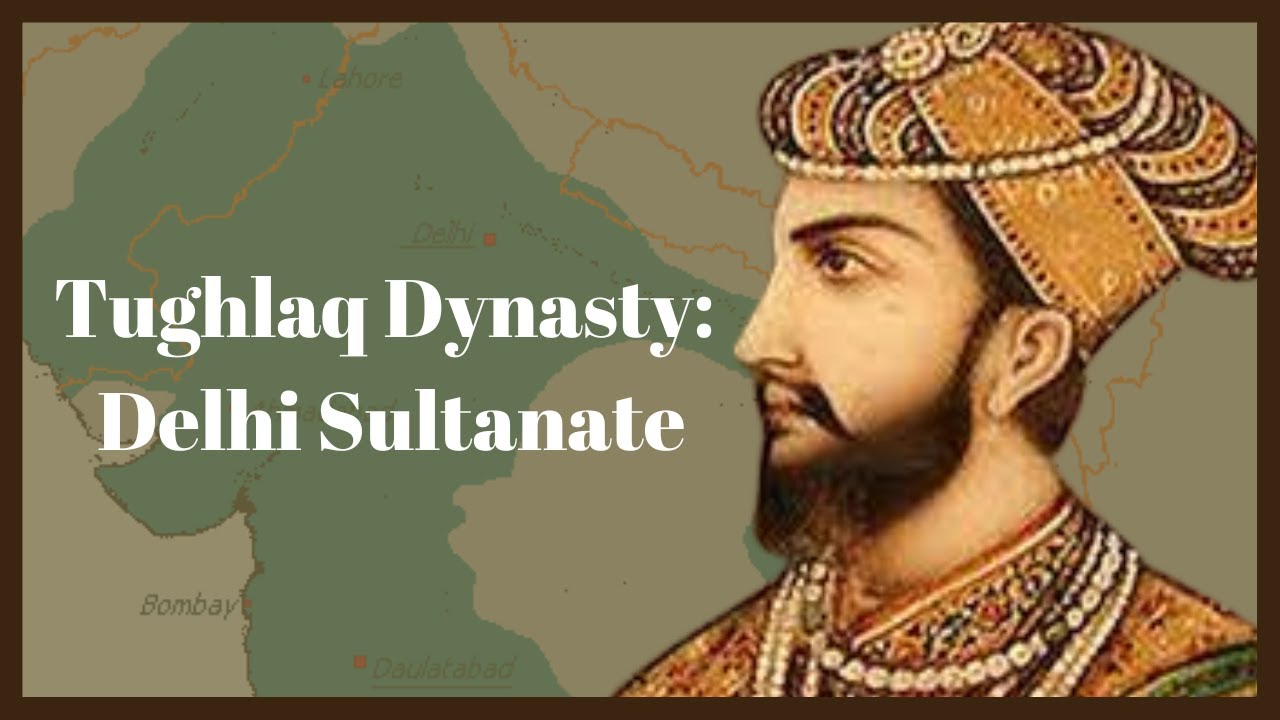
1.Ghiyasuddin Tughlaq (AD 1320-1325)
Ghazi Malik or Ghiyasuddin Tughlaq was the founder of Tuglaq dynasty or the dynasty of the Qaraunah Turks. He was the first Sultan of Delhi who took up the title of Ghazi or slayer of the infidels.
He liberalised Alauddin’s administrative policies and took a keen interest in construction of canals and formulated the famine policy. The judicial and police arrangements were made efficient.
He gave up the land measurement system and started the Batai System or sharing of crops. Efficient Postal service was restored.
He sent his son, Jauna Khan to re-establish and authority in Warangal (Kakatiya) and Madurai (Pandyas).
He built the city of Tughlaqabad near Delhi and made it his capital.
Nizamuddin Aulia was a Sufi saint of Chisti order. He said, "Hanooz Dilli Door Ast" which means Delhi is yet far away. These words were said by him to Sultan Giyasuddin.
He died in 1325, after a fall from a high raised pavilion, Ibn Battuta, the Moroccan traveller, who was in Delhi at that time, opined that his death was due to sabotage arranged by his son, Jauna Khan “(Mahammad-bin-Tughalq)
2.Muhammad-Bin-Tughlaq (AD 1325-1351)
Jauna Khan ascended the throne under the name Muhammad-bin-Tughlaq. He was one of the most extraordinary kings who ever sat on the throne of Delhi. He was an expert in Arabic, Persian Astronomy, Philosophy, Maths and Medicine.
He applied his rational and innovative mind in every aspect of administration but achieved little success as he was very hasty in nature.
Five Ambitious Projects of Muhammad-Bin-Tuqhlaq
His five ambitious projects were also called his follies .
Taxation in the Doab (1326)
The Sultan made an ill-advised financial experiment in the Doab between the Ganges and the Yamuna. He not only increased the rate of taxation, but also revived and created some additional Adwabs or Cessess.
Transfer of the Capital (1327)
The most controversial step was the transfer of capital from Delhi to Deogiri. He renamed Deogiri as Daulatabad.
Introduction of Token Currency (1329)
Muhammad Tughlaq decided to introduce the Bronze coin, instead of the silver coin which would have the same value.
Bribing to Mongols
Plan to conquer Khurasan and Iraq-Correction
3.Firoz Shah Tughlaq (1351-1388)
Firoz Tughlaq faced the problem of preventing the imminent break up of Delhi Sultanate. So he tried to appease the nobility, the army and the Battuta theologians.
He made the Iqta System hereditary.
He extended the principle of heredity to the army. The soldiers were not paid by cash but by assignments on land revenue of villages (Vajeha). This technique led to many abuses.
In order to encourage agriculture, the Sultan paid a lot of attention to irrigation. He repaired a number of canals. The first canal was from Sutlej to Ghaggar. The second canal carried water from Yamuna to Hissar. He imposed the Haq-i-harbour Hasil-i-Sharpie water tax.
He encouraged the practice of slavery and selected young boys from the conquered territory for the purpose. Diwan-i-Bandagan was created as the department for slaves.
Built new towns of Fatehabad, Hissar, Jaunapur (in memory of Muhammad Tughlaq) and Firozabad. During his Bengal campaign, he renamed Ikdala as Azadpur and Pandua as Firozabad.
He brought two pillars of Ashoka from Topara and Meerut, to Delhi and repaired Qutub-Minar when it was struck by lightning.
He established a hospital at Delhi, known as Darul-Shifa.
A new department of Diwan-i-Khairat was set-up to make provision for the marriage of poor girls.
Introduced two new coins – Adha (50% Jital) and Bikh (25% Jital)
Mathura was destroyed during his period.
He made Jizya a separate tax and he imposed this tax upon the Brahmans for the first time in the history of the Sultanate.
Barani the historian was in the court. He wrote Tarikh-i-Firozshahi and Fatwa-i-Jahangiri
He died in AD 1388.
Timur’s Invasion
Timur, the head of the Chaghati Turks and the ruler of Mongols in (Central Asia) invaded India in 1398, during the reign of Nasiruddin Muhammad Tughlaq.
He robbed people. He is said to have inflicted on India more misery than has ever before been done by a conqueror in a single invasion.
Timur nominated Khizr Khan to rule over Punjab and himself returned to Central Asia. He died on his way to conquer China in AD 1404.
Taxation System
Firoz Shah Tughlaq introduced a new system of taxation according to the Quran.
Kharaj: A land of 1/10th of the procedure of land.
Zakat: 2.5% tax on property (by Muslim only)
Jizya: A tax by non-Muslims (even by Brahmins)
Khams: 1-6th of the booty captured during war.
